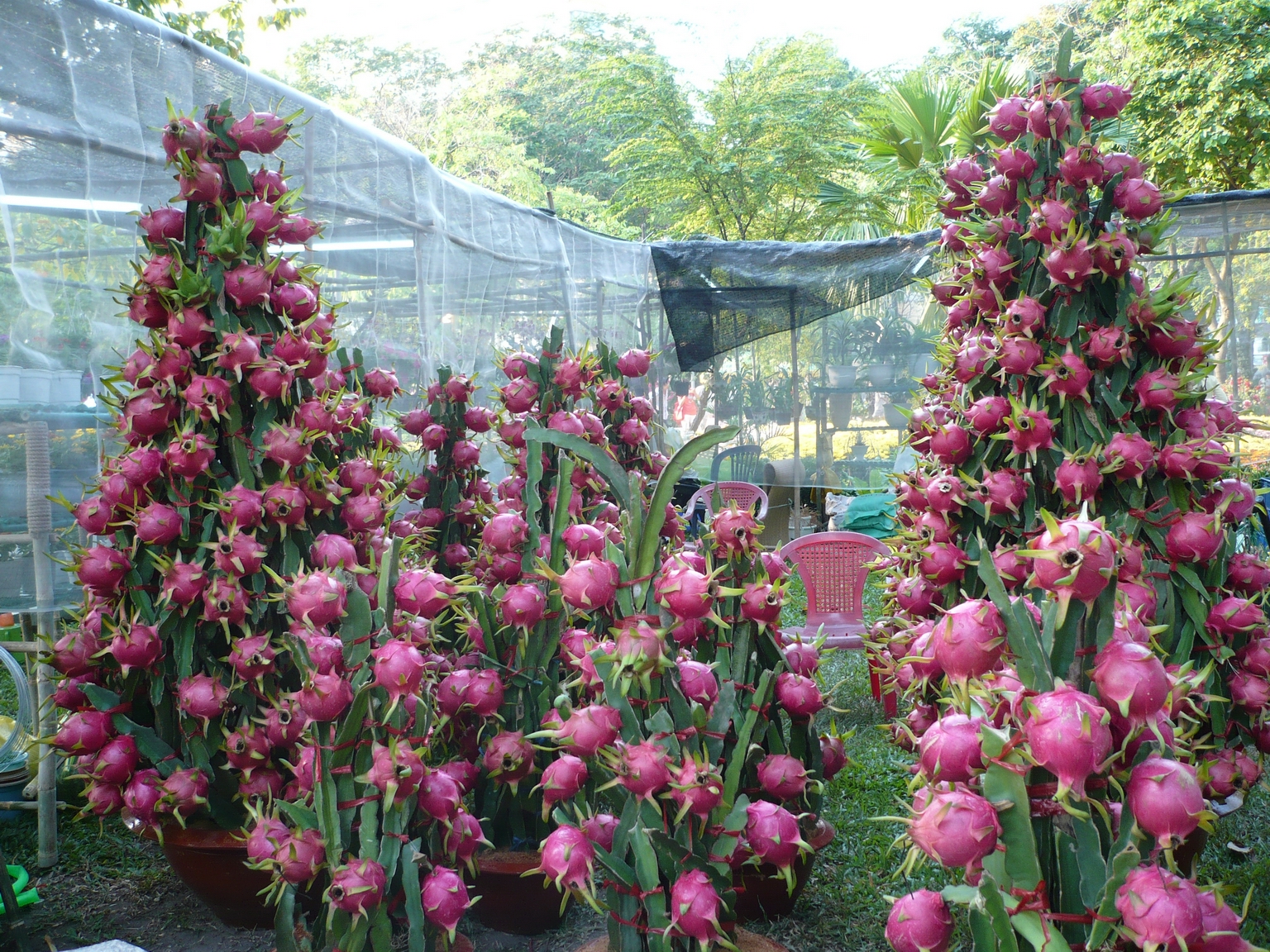Porphyric-blooming Cereus

No. Enc.: 1d10 (1d10)
Alignment: Neutral
Movement: None
Armor Class: 7
Hit Dice: 2
Attacks: 2-5 (1d4+1)(projectile spines)
Damage: 1d4+special
Save: L1
Morale: None
Hoard Class: VI
XP: 29
Also known as the Blood-Bloom Cactus, this mutated version of Hylocereus undatus is a profusely branched climbing vining cactus, bearing largish (about a foot in diameter) white-colored flowers, and white oval fruit. The flowers and fruit darken to a beautiful crimson when the cactus has fed.
The preferred method of attack for a Porphyric-blooming Cereus is to wait until its prey is within a few feet, then quickly extend 2-5 spines with a range of 30 feet. Each spine that hits inflicts 1d4 points of damage. Each tendril that hits absorbs 1d6 hp of blood each round it is attached. It has a maximum capacity of 100 hp worth of blood, or as much as 10 pints. It swells to allow the fluid to be stored. The Porphyric-blooming Cereus gains half the damage done back in hit points. A cactus that is feeding does not attack again until it is dislodged.
A Porphyric-blooming Cereus is interested only in food. If it finds it has attached itself to something that doesn't have blood, it normally lets go and drops to the ground. It continues to fight only in self-defense. Blood-Bloom Cacti are found all over the wasteland in small clumps of as many as ten plants. They are non-ambulatory and so have no territory. While they have no treasure in and of themselves, the occasional victim will leave behind some trinkets.
Mutations: Projectile Vines (Fluid Leech)
NEW MUTATION (Beneficial Plant Mutation)
Projectile Vines
The plant has a network of modified vines that can be shot out to 30 feet for small plants, 60 feet for humanoid-sized plants, and 100 feet for large or huge plants. If the plant has sensory capabilities it is also assumed to have the intelligence to direct these modified vines; otherwise, the vines spread out 360˚. To determine the exact type of projectile, roll 1d6 and consult the chart below.
Roll Type Effect
1 Poison Vines - Plant has a network of 3d4 vines dotted with sharp thorns coated with poison (with a type randomly determined upon creation).
2 Sucker Vines - The plant has 4d6 vines edged with suckers that affix themselves to a victim on a successful hit. Each vine does 1d6 damage each action round it is attached to a victim, (on the second round, not the first). All hit points drained from the victim are added to the plants score. A successful grapple check must be made each round to continue to drain the victim. Sucker vines release their victim when their plant or the victim is killed.
3 Harpoon Vines - The plant has 2d6 hardened spear-like vines they can launch at targets, up to the plants total number of harpoons. Each spear does 1d8 damage plus strength modifier. An attack roll of 19 or 20 means the victim has been impaled by a harpoon for double damage. If the plant fails to impale, it retracts the harpoons and fires again the next round. When a victim has been successfully impaled, the plant retracts the harpoon, which pulls the victim to the plant.
4 Energy Leech Vines - The plant has 3d4 vines that will drain 1d6 charges (or equivalent) from any energy item it comes in contact with on a successful hit. The plant gains 1 hit point back from every charge drained. A successful grapple roll is required to maintain contact each round.
5 Fluid Leech Vines - The plant has 3d6 vines that will drain 1d6 hit points from any creature they come in contact with. The plant gains half the damage done back in hit points. A successful grapple roll is required to maintain contact each round.
6 GM’s Choice - The GM may choose any type of vine, combination of vines, or create his own type of vine.

No comments:
Post a Comment